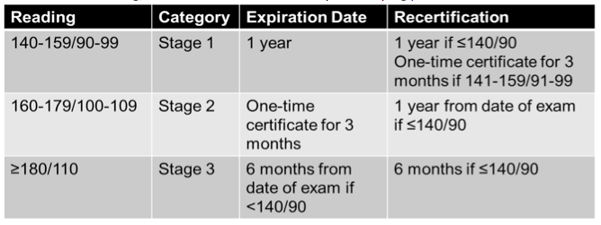
- August 27, 2015
- Lakin Larimore
DOT Physical Requirements
Linda Sitton, FNP-C, is a Certified DOT Medical Examiner and is the Operations Director for OccuMed based in Joplin, Mo. Her professional achievements include participation on the 2007 Education Working Integrated Product Team (WIPT) that developed the current online medical examiner handbook. This group incorporated and expanded the Federal Motor Carrier Safety Administration (FMCSA) 49CFR Part 391 Qualifications of Drivers/Guidance for the Department of Transportation (DOT) physical. With this knowledge base, Linda performs more than 850 DOT physicals a year. She has been a Certified Medical Examiner since February 2013.
The top five issues medical examiners come across are high blood pressure, diabetes, cardiac events, sleep apnea and issues with weight. Different tests are required by the DOT and based on your individual results, you will receive a card that states when you need to get recertified. Typically, drivers can go a full year before recertification, but if you have a history of high blood pressure or heart problems those dates can differ.
A stress test is one test that is required and can be administered one of three ways; physically, chemically or by using a nuclear test. If you have history of heart problems you will need to bring a copy of your current exercise tolerance treadmill test with you. If you have had open heart surgery in the last five years, a stress test may not be required.
Blood pressure is another prominent issue in the driving community that can lead to bigger problems if not handled properly. High levels can be dangerous and are most commonly attributed to behavioral issues such as smoking, excessive caffeine intake and poor sleeping patterns.
The table above is used by medical examiners when determining the length of time before recertification.
Sleep apnea is another common problem professional drivers may have. If you have a sleep history that is irregular, a BMI ³ 35, and are taking any medication, examiners look for these red flags when determining if you suffer from sleep apnea. You will be disqualified if you are non-compliant with treatment, have a crash specifically related to falling asleep at the wheel or suffer from excessive sleepiness. Screening and treatment for sleep apnea can be done via home sleep screen or CPAP machine and may be covered by your insurance.
New standards for the exams have been introduced and will go into effect December 22, 2015. Meeting the requirements for the yearly exams are important for two reasons. The first reason is our driver’s health has a direct impact on their safety. Our number one goal is to have everyone to return safely to their family and friends and by maintaining a healthy lifestyle, you are helping us achieve that goal. The second reason is that staying healthy and passing your exam helps keep you on the road and rolling.

Leave Your Comment
Many desktop publish packages web page editors now use model text
search for sites their infancy.